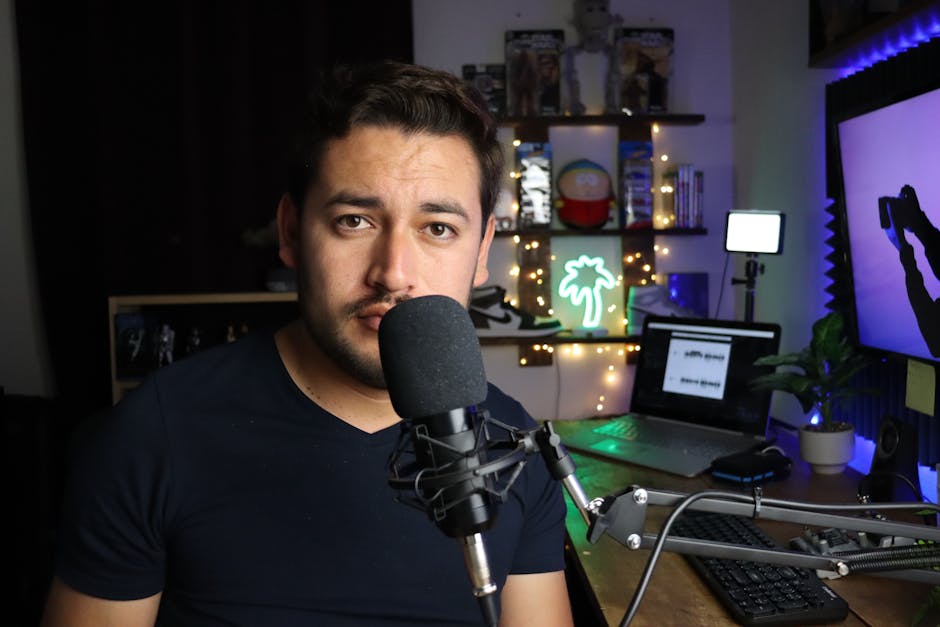Twitch and YouTube: Different Arenas, Shared Impact
Streaming platforms may serve the same broader community of gamers and fans, but Twitch and YouTube offer distinct experiences shaped by format, function, and community behavior. Knowing the strengths and limitations of each helps creators make smart decisions about where and how they tell their stories.
Format: Live Energy vs. Edited Precision
- Twitch thrives on real-time interaction. Viewers tune in for the unpredictability and community energy that comes from watching events unfold live.
- YouTube, by contrast, delivers curated content with structured pacing. Edits polish performances, cut downtime, and package gameplay in tighter, more accessible formats.
Engagement & Discoverability
- Twitch prioritizes live visibility. Popularity often depends on being online consistently, with loyal viewers helping streamers climb the ranks.
- YouTube benefits from evergreen content. Videos are searchable, shareable, and can continue gaining views long after their release.
Key differences include:
- Twitch streams reward presence; YouTube values replayability.
- YouTube’s algorithm supports long-term discovery; Twitch centers on momentum and community.
Monetization Pathways
While both platforms offer creator monetization options, the structure differs:
- Twitch offers subscriptions, Bits, and real-time donations, emphasizing live audience support.
- YouTube leans into ad revenue, memberships, and long-tail income through evergreen videos.
Audience Overlap and Cross-Promotion
Most creators don’t have to choose between platforms—they use both strategically.
- Streamers often repurpose Twitch live sessions into YouTube highlight reels or commentary videos.
- YouTube creators use live Twitch streams to foster deeper engagement with fans.
- Audiences migrate between platforms, maintaining ongoing interest through varied content formats.
For further insights on Twitch’s cultural impact, check out the full breakdown here: Impact of Twitch streaming
Introduction
Gaming has moved beyond the console. The real action is just as likely to happen on Twitch or YouTube as it is in the game itself. These platforms are now where narratives form, where reputations are tested, and where micro-communities rally around personalities and playstyles. It’s where the game doesn’t stop when you quit to menu.
Streamers and creators have become just as important as developers in shaping how a game feels, flows, and spreads. Their livestreams, reactions, breakdowns, and commentary build a framework around a game that reaches far beyond gameplay mechanics. And it all happens in real time.
This shift means something big. It means influence is live. It means audience and creator exist in the same moment, shaping storylines together. Understanding this dynamic is the key to understanding where gaming culture is going next.
Streaming as Storytelling

Gaming used to be a solo experience or, at most, something you shared with a few friends on a couch. Streaming shattered that. Now, the gameplay narrative isn’t fixed—it unfolds live, and viewers are part of it. A streamer isn’t just playing a game; they’re guiding a shared experience, reacting in real time, building suspense, comedy, and sometimes heartbreak with thousands of witnesses.
This constant live presence means that games aren’t consumed the way they used to be. A boss fight can become a viral moment. A glitch turns into a meme. A quiet story-driven game gets attention because a respected streamer played it with emotional weight. Developers watch these streams and sometimes adjust design or release new updates because of what catches fire during broadcast.
Viewer interaction adds another layer. Live chat reactions shape how the streamer moves forward—offering bets, challenges, or moral decisions. Content becomes a two-sided performance, and what was once linear gameplay now feels collaborative.
Look at the “Tears of the Kingdom” speedrun stream where a gamer broke the game physics live, drawing in millions. Or the time a Twitch chat collectively navigated a Pokémon game through simple text commands. These aren’t isolated flukes. They’re modern folklore born in real time.
Tools of the New Age Gamer-Storyteller
Streaming today is storytelling, and the tools have leveled up. Overlays, alerts, and branded widgets aren’t just gimmicks anymore. They’re narrative extensions. A slick transition, a branded alert when someone subscribes, or an animated emote drop says something about the story you’re telling and the experience you’re creating.
Visual identity is half the battle. When channels look cohesive and intentional, people stay. Custom overlays, matching colors, even on-screen fonts help define a streamer’s voice without saying a word. It’s not about being flashy. It’s about giving viewers a sense that they’re in on something that’s built with care.
Smart tech makes immersion easier. Tools like dynamic stream decks or modular alert systems let creators guide moments in real-time, creating small, live arcs that pull viewers deeper. The more seamless the experience, the more viewers feel like part of the fabric.
Want your stream to stop looking like a hobbyist garage project? Here’s a solid place to start digging deeper: Twitch overlay tips.
Viewer Communities as Co-Creators
Streaming isn’t a one-way broadcast anymore. Streamers and audiences now push and pull on shared narratives in real time. When a game is live, chat is live too—and chat talks back. Reactions, donations, inside jokes, spammed memes, or well-timed polls can all steer what happens next on stream. From shifting strategies mid-battle to choosing what game gets played next, the viewer is fully in the room.
We’ve already seen how a shared moment can define a game. Among Us found second life and mainstream fame thanks to chaotic, meme-fueled Twitch group play. Elden Ring became less about solo questing and more about community legends—boss battles turned into internet-wide events. These aren’t just games anymore, they’re stages. And the audience has a role.
Streamers still hit the “Go Live” button, but fans now shape canon alongside. They clip the big moments, craft reaction lore, and even pressure devs through viral support or backlash. In 2024, the border between player and spectator is functionally broken. The stream is co-written.
Conclusion
Twitch and YouTube aren’t just where gamers stream. They’ve become narrative ecosystems where the story unfolds in real time. On Twitch, the streamer’s reaction becomes the plot twist. On YouTube, the edit can redefine the moment. These platforms don’t just show gameplay — they add layers to it, shaping how games are remembered and talked about.
The traditional idea of game stories starting and ending with a campaign mode feels dated. Now, the community writes its own canon. A single live-streamed decision, a funny glitch, or a viewer’s comment can take on a life of its own. What used to be solitary playthroughs are now shared experiences that evolve with every stream.
Looking ahead, this isn’t slowing down. Expect more interactivity. Think chat-driven game paths and creators having a real say in game development. Studios are watching streamers closer than ever. Digital storytelling is adapting — faster, looser, more connected. The platforms are ready. So are the audiences. And the creators? They’re not just players anymore. They’re authors.
Rick Aderholt, the accomplished copywriter at MetaNow Gaming, plays a pivotal role in shaping the hub’s diverse gaming content and fostering community interaction. With a keen eye for engaging storytelling, Rick brings a wealth of gaming knowledge to the forefront. His dedication to creating content that resonates with the gaming community is evident in every piece. At MetaNow Gaming, Rick contributes to a space that goes beyond traditional gaming platforms, emphasizing diversity and community engagement. Join Rick in exploring the multifaceted world of gaming at MetaNow Gaming, where his words breathe life into the diverse narratives of the gaming universe.





